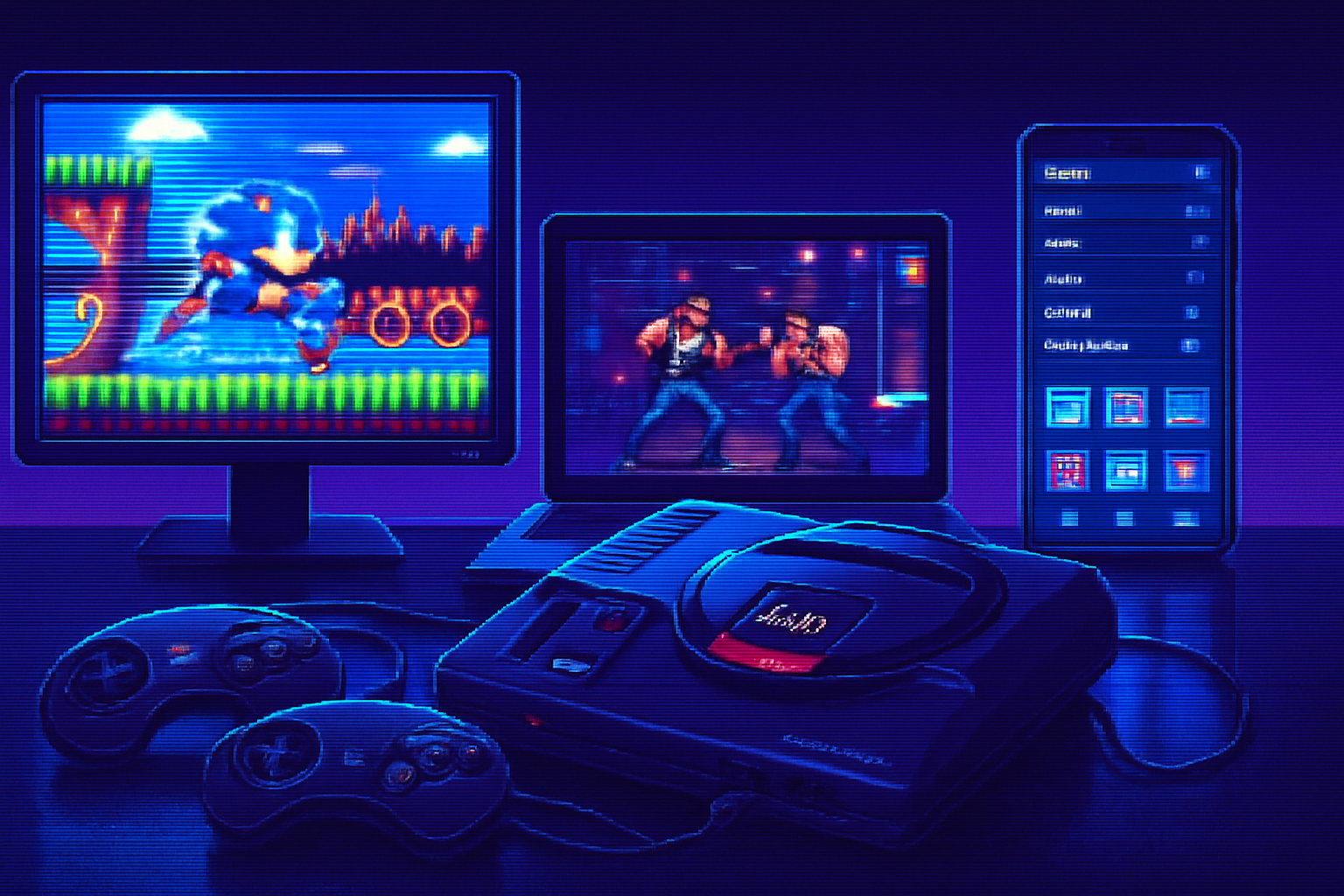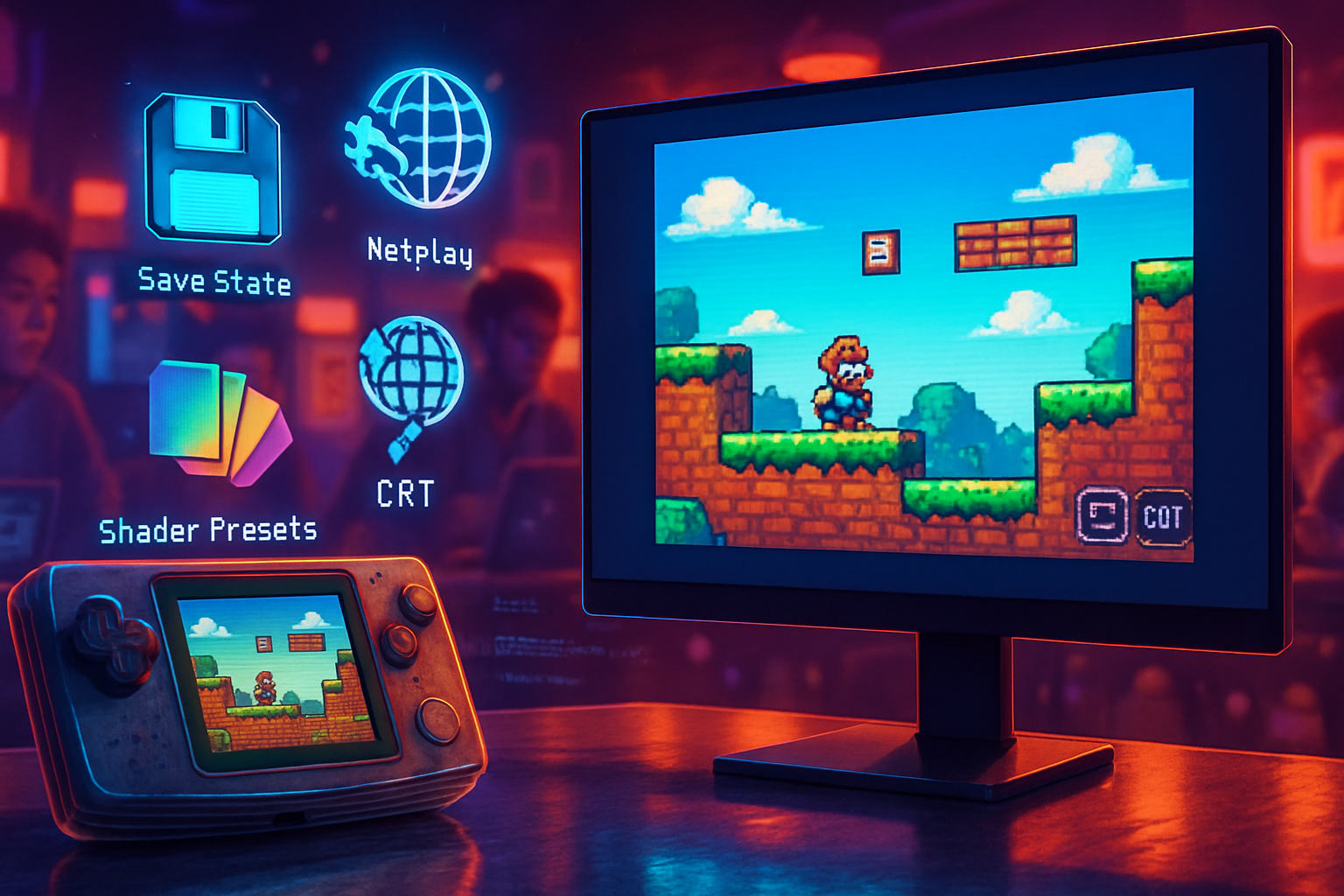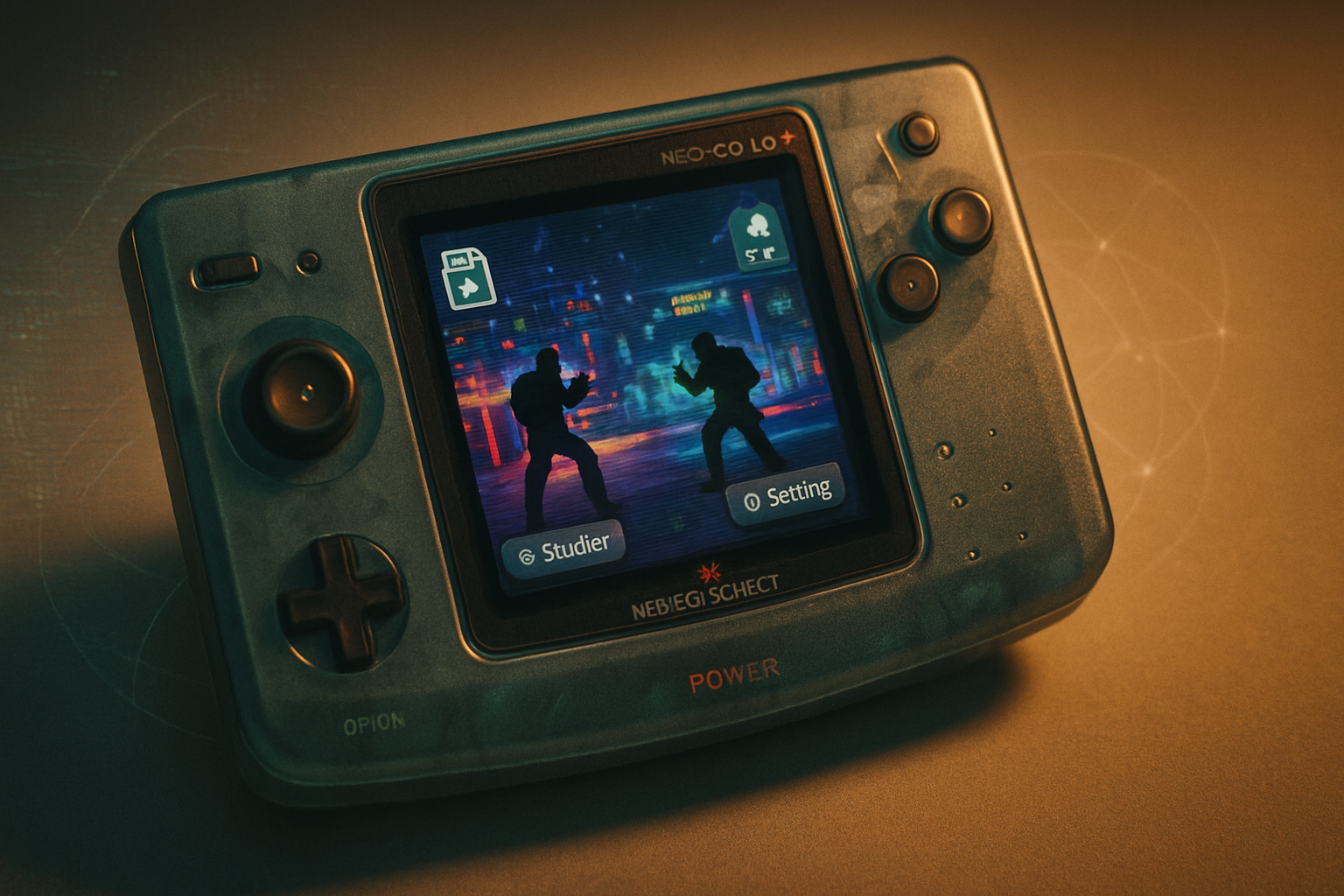· retrogaming · 7 min read
The Best Sega Game Gear Emulators: A Comprehensive Comparison
A practical, no-nonsense comparison of the top Sega Game Gear emulators available in 2023. Performance tests, compatibility notes, platform support and which emulator to pick depending on whether you prize accuracy, convenience, or tinkering fun.

I was nine when I first borrowed a Game Gear from a friend and discovered two immutable truths: A) the screen was incredible for its time, and B) the batteries that powered it were a kind of tragicomic tax on fun. Emulation solved for both - and then some. But the market of Game Gear emulators in 2023 is a bit like a junk drawer: full of treasures, some broken parts, and a few things you’ll never use.
Below: a clear-headed, slightly sardonic map to navigating that drawer. I compare the emulators that matter, explain what each one does better (or worse), and tell you which one to pick depending on whether you want faithful preservation, easy setup, or the ability to prod the machine with a debugger.
How I’m judging these emulators
Not with arcane benchmarks but with the things that actually annoy, delight, or liberate the modern player:
- Accuracy - audio/video fidelity, timing, and how games behave compared to the original hardware.
- Compatibility - how many commercial Game Gear ROMs run cleanly without glitches.
- Performance - CPU/GPU usage and how well the emulator runs on low-end machines and phones.
- Usability - GUI, input mapping, savestates, scaling/filters and how friendly it is to non-experts.
- Features - debug tools, ROM management, netplay, rewind, cheat support, shader availability.
- Portability & maintenance - active development, platform coverage (Windows/macOS/Linux/Android/iOS/Raspberry Pi).
I tested (lightly, for ergonomics and obvious bugs) and leaned on documentation and community signals for deeper claims.
The contenders (short list)
- Genesis Plus GX (via RetroArch or libretro core)
- RetroArch (front-end) using Genesis Plus GX or other SMS/GG cores
- Kega Fusion
- MEKA
- Mednafen
- GearSystem (legacy niche builds)
If you want to jump to the bottom line: RetroArch + Genesis Plus GX is the pragmatic winner for most people. But the devil is in the details - read on.
Genesis Plus GX (libretro core)
Why it matters: Genesis Plus GX is, in 2023, the most widely recommended core for Genesis/Mega Drive, Master System and Game Gear native emulation inside RetroArch. It’s well-balanced between accuracy, performance, and features.
Pros:
- Excellent compatibility with Game Gear titles and pretty faithful audio/video emulation.
- Low system requirements - runs well on modest hardware and many ARM devices (Raspberry Pi, phones).
- Works inside RetroArch, so you get a unified UI and features like rewind, shaders, netplay (when supported), and unified controller mapping.
- Actively maintained via the libretro ecosystem.
Cons:
- Behaviour and options depend on RetroArch’s GUI (which some find clunky).
- For purists, some very nuanced hardware edge-cases may differ from standalone, high-accuracy emulators.
Where to get it: RetroArch (https://www.retroarch.com) and the Genesis Plus GX repo (https://github.com/ekeeke/Genesis-Plus-GX).
Best if: you want cross-platform convenience, a polished UI for multiple systems, and features like shaders and rewind.
RetroArch (front-end + cores)
Why it matters: RetroArch isn’t an emulator per se - it’s a frontend that runs emulator “cores.” With the right core (Genesis Plus GX or smsplus), RetroArch is probably the most flexible way to play Game Gear games across devices.
Pros:
- Unifies dozens of systems and lets you use the same UI and controller mapping.
- Powerful features - rewind, savestate management, shader support, runahead for input latency reduction, remapping, netplay (varies by core).
- Works on Windows/macOS/Linux/Android/iOS/various consoles and Raspberry Pi.
Cons:
- The UI can be bewildering for newcomers. Settings are deep and sometimes inconsistently named across cores.
- You’re still at the mercy of the chosen core’s accuracy.
Best if: you have multiple retro systems in your library and want one interface to rule them all.
Official site: https://www.retroarch.com
Kega Fusion
Why it matters: Kega Fusion has been a go-to Windows emulator for Sega systems for years. It’s user-friendly and historically very compatible.
Pros:
- Plug-and-play - simple UI, easy controller setup, good default compatibility.
- Good audio and video out of the box; lots of configuration for lag reduction and scaling.
- Has supported Game Gear, Master System, Genesis and more in a single binary.
Cons:
- Development has been sporadic; it is not as actively maintained as the libretro ecosystem.
- Less accurate than specialists like Mednafen on a handful of edge cases.
Best if: you want Windows-focused simplicity and a traditional GUI without the RetroArch learning curve.
Reference: Kega Fusion history and details on its community pages (see the Kega Fusion Wikipedia article).
MEKA
Why it matters: MEKA is almost the ideal tool for tinkerers: Game Gear and Master System-specific features, ROM headers, debugging, and palette editing. It’s beloved by rom-hackers and people who like to see what’s happening under the hood.
Pros:
- Excellent feature set for developers and hackers - built-in map viewers, tile/sprite inspectors, palettes, and more.
- Accurate enough for most games, and designed specifically around Sega’s 8-bit ecosystem.
- Clean, retro GUI that maps to how people historically debugged cartridges.
Cons:
- Less user-friendly for casual players focused only on playing games - the UI can be busy.
- Windows-focused historically; ports and builds vary.
Best if: you want to debug, ROM-hack, or deeply inspect Game Gear internals.
Possible repo/reference: MEKA project pages and community mirrors.
Mednafen
Why it matters: Mednafen is a command-line, multi-system emulator that aims for high accuracy. For preservation-minded users who want bit-for-bit behavior and excellent audio emulation, Mednafen is a top choice.
Pros:
- Extremely accurate emulation and excellent sound reproduction.
- Detailed configuration for sync, audio, and input.
- Active development with a reputation for careful fidelity.
Cons:
- Command-line/INI-driven interface can intimidate average gamers.
- Lacks the out-of-the-box polish (GUI, graphical settings) you get from RetroArch.
Best if: you care about authenticity and want the closest possible behavior to the real hardware.
Official site: https://mednafen.github.io
GearSystem and niche builds
There are smaller, niche Game Gear emulators that survive in the corners: GearSystem, old builds of Gens that included Game Gear support, and various platform-specific ports. They sometimes offer unique features but generally fall short on maintenance or compatibility compared to the list above.
Best if: you’re chasing a very specific old build, or need something that runs on obscure hardware.
Side-by-side comparison (practical takeaways)
- Best for most users - RetroArch + Genesis Plus GX
- Why - portability, features (shaders, rewind, runahead), good compatibility, runs on everything from phones to Raspberry Pi.
- Best for preservation / purists - Mednafen
- Why - focus on accuracy and faithful audio/video reproduction.
- Best for Windows plug-and-play - Kega Fusion
- Why - simple UI and long track record of compatibility.
- Best for tinkerers / ROM hackers - MEKA
- Why - built-in debugging tools and deep Game Gear-specific features.
- Best minimal ARM/embedded - Genesis Plus GX core on RetroArch
- Why - low CPU overhead and mature ARM builds.
Common questions and practical tips
- Do you need a BIOS for Game Gear emulation?
No. Game Gear emulators do not require a BIOS the way PlayStation emulation does. ROM files (the game dumps) are what you need.
- How about save states vs. real saves?
Use both. Save states are convenient and sometimes lifesaving, but they aren’t a substitute for in-game saves when you care about consistent behavior across sessions or moving saves to real hardware.
- Should I use shaders or pixel-perfect scaling?
For authenticity, use 1:1 pixel scaling or integer scaling with crisp filters. If you want something that looks ‘retro but fancy’ try CRT shaders (available in RetroArch). Beware shaders can add CPU/GPU cost on lower-end devices.
- Netplay and cheat support
Netplay for Game Gear is niche; RetroArch offers some netplay features, but expect limitations. Cheat support is available in RetroArch and many standalone emulators - formats differ, so consult the emulator’s docs.
Quick setup recipe (5 minutes to play)
- Install RetroArch for your platform (PC, Android, Pi): https://www.retroarch.com
- Open RetroArch > Online Updater > Core Updater > download “Genesis Plus GX”.
- Load your ROM - Main Menu > Load Content > point to your .gg file.
- Map controls - Quick Menu > Controls.
- Optional - enable shaders or runahead for input smoothing.
If you prefer a native Windows app, download Kega Fusion and drag your ROM into it.
Final verdict (short and brutal)
If you want one recommendation and one only: start with RetroArch + Genesis Plus GX. It gives you the best mix of compatibility, features, and cross-platform support in 2023. If you’re a preservationist who wants the smallest fidelity edge and don’t mind a steeper learning curve, use Mednafen. If you like poking at sprites and maps and want to see how the Game Gear works under the hood, run MEKA.
The Game Gear was, in spirit, an act of obstinate optimism - a colorful, power-hungry handheld that demanded attention. Emulation finally frees its games from alkaline tyranny and lets us enjoy their stray brilliance without an industrial-sized battery budget. Choose the emulator that matches how you want to experience that brilliance: convenience, accuracy, or the delightful itch of tinkering.
References and further reading
- RetroArch - official site: https://www.retroarch.com
- Genesis Plus GX - libretro core and repo: https://github.com/ekeeke/Genesis-Plus-GX
- Mednafen - official documentation: https://mednafen.github.io
- Kega Fusion - historical overview (Wikipedia): https://en.wikipedia.org/wiki/Kega_Fusion



